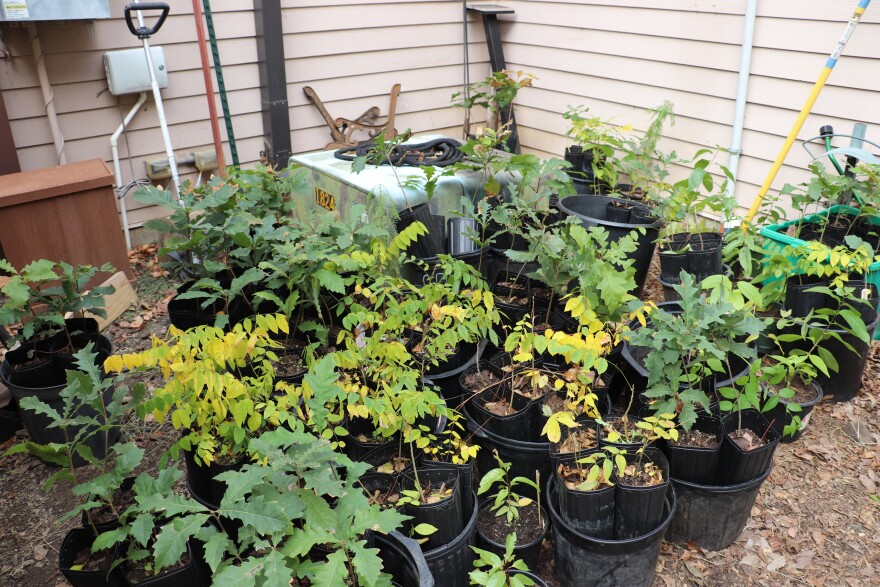When 100 mph winds and storms ripped through Tulsa over Father’s Day weekend this year, at least 50 trees fell at Oxley Nature Center.
Driving to the center through Mohawk Park, I noticed several piles of chopped-up branches and tree trunks left over from red and white oaks that towered over the golf course here.
Every year, Oxley naturalists hold a book sale, but this year was different, tree saplings were also available.

Mary Seabourn, an interpretive naturalist with the center, said the storm took so many older trees throughout the park because they were stand-alone.
“Trees rely on each other, so in a forest in high winds their root systems are tied together. So they have their neighbors to lean on,” she said.
Seabourn and her colleague Karen Harris said even their own yards were devastated by the winds.
“That was a hard day, we all love those trees. Yeah, Mary and I actually cried. They’re almost like family after a while, you know. And they have identities,” they said.
Joe Marcoux is a forester turned woodworker from Tulsa. He grew nearly 300 saplings for planting and the book sale — from seeds he collected in the park, like bur oak black walnut, and Kentucky coffee tree.
“I stepped outside the forestry field years ago, and I've been a cabinetmaker most of my life. So this is something of penance for all the trees that I'm responsible for having cut down,” he said.

Marcoux nurtured these seeds for 18 months, even before the storm. The damage caused by the storm inspired him to give back to his community by helping regrow Tulsa’s tree canopy.
He said the best time to plant a seedling is in the fall because it allows the plant to take root and acclimate to Tulsa’s winter climate.
“The roots will kind of take hold yet this fall. The topside is going to go dormant. But all that is in place come springtime as things warm up. The tree’s really ready to go,” he said.
Some Tulsans visiting the nature center came up to Marcoux asking questions about which trees would be best to replant in their yards. Tulsa resident Angela Wynne was missing her sugar maple that fell during the storm.
"We were sad because it was there since we moved in. I loved its color. It had sort of a mauvish red in the fall. I just saw those little guys and went, 'oh, I miss my tree,'" she said.
According to the EPA, climate change is expected to worsen the urban heat island effect, where dense areas of pavement, buildings, and other surfaces that retain heat experience higher temperatures than areas with tress in a city.
Planting more trees could lessen the effects of urban heat islands. Marcoux said he hopes to make trees accessible to Tulsans.

“It’s one little thing that you and I can do, and it makes a difference. You’re doing it for the next generation. I’m not going to see these trees grown to great heights. But I hope to put them in people’s hands,” he said
Volunteers gathered with shovels, boots, and gloves a week after the tree sale at Oxley to plant Marcoux’s leftover seedlings.
He handed me a few acorns from Bur and Chinkapin oak, after giving them a float test to make sure there are no holes in them.
“These were all collected in Mohawk. So it’s local seeds. They know what to do. They’re ready to go,” Marcoux said.
Volunteers at Oxley planted 104 trees throughout the forest. For Marcoux, planting a tree is how he fosters community, combats climate change, and provides for future generations.
He’ll be growing more seedlings next year to sell and plant throughout the city.








